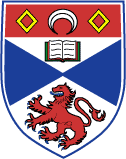


|
|

|
| Theoretical Physics - Dr. Andrew Green |
University > Physics Department > Dr. Andrew Green
|
Research OverviewMy research interests are directed towards two main areas; strong correlations and the interface between the quantum and classical worlds. I am involved a variety of projects that explore these themes. Strong CorrelationsThe behaviour of systems of many interacting particles may be divided into two broad classes; strongly correlated and weakly correlated. Weakly correlated systems may be understood in terms of non-interacting particles. Although the characteristics of individual particles may be altered by interactions with the other particles, no qualitatively new features appear in their behaviour. Once these alterations - {\it e.g.} changes in effective mass or charge - have been taken into account no further account need be taken of the interactions between particles. The interactions between particles in a weakly correlated system may be very strong and the effects that they produce quantitatively very large - in heavy fermion systems there may be a thousandfold increase in the effective mass of the electrons- it is the triumph of Landau-Fermi liquid theory that it provides a perspective from which such profound effects may be understood in terms of modified independent particles. In strongly correlated systems, qualitatively new features appear in the group behaviour that cannot be ascribed to modifications in the characteristics of the individual particles. Such systems cannot be understood from an independent particle perspective. The group behaviour is typified by collective phenomena involving all of the constituents of the system. The phenomena of strong correlation are found in a huge variety of systems; in the electronic behaviour of solid-state systems, in network information theory, in economic, social, ecological and physiological systems. The understanding of these systems is in its infancy. Although a number of strongly correlated systems have been understood there are few general principles. The attempt to understand such strongly correlated systems presents some of the most challenging problems in mathematical science. My main interest is in the electronic properties of solid state systems, particularly those in the vicinity of quantum phase transitions. I also have a sideline in the information theory of non-linear optical systems - the phenomena found in non-linear optical systems are very similar to those in certain solid-state systems and some of the techniques developed in the latter context may be applied to the study of non-linear optical communication systems. The Quantum/Classical BoundaryWhen the founding fathers of quantum mechanics formulated the Copenhagen interpretation, they divided the world rigidly into the quantum mechanical world on the microscopic scale and classical world at the macroscopic scale. For many years, this pragmatic decision served perfectly well. Experiments could not probe the boundary between these two worlds. Gradually over the last 40 years or so, phenomena have been discovered that probe this boundary. One of the first phenomena to explore this boundary was the Josephson effect - predicted by Brian Josephson in 196? and discovered experimentally in 196?. This effect relies upon the macroscopic quantum nature of superconductivity. Interaction with the environment drives this system through a transition from classical to quantum behaviour. This was first considered in pioneering work of Caldeira and Legget. More recently, advances in nano-fabrication techniques, driven largely by the micro-electronics industry, have lead to the fabrication of devices in which quantum effects are crucially important. There has been a large effort to harness these quantum effects in a quantum computer; a computer that utilises the inate parallelism of quantum mechanics in order to speed up computation. I am involved in a project to understand the role of quantum and classical effects in the measurement of the state of quantum bit. The physics of quantum-critical systems is intimately tied to the boundary between the quantum and classical worlds. The physics of a system in the vicinity of quantum phase transition shows an inextricable mixture of classical and quantum behaviour. This is expanded upon in the introduction to quantum-criticality. |